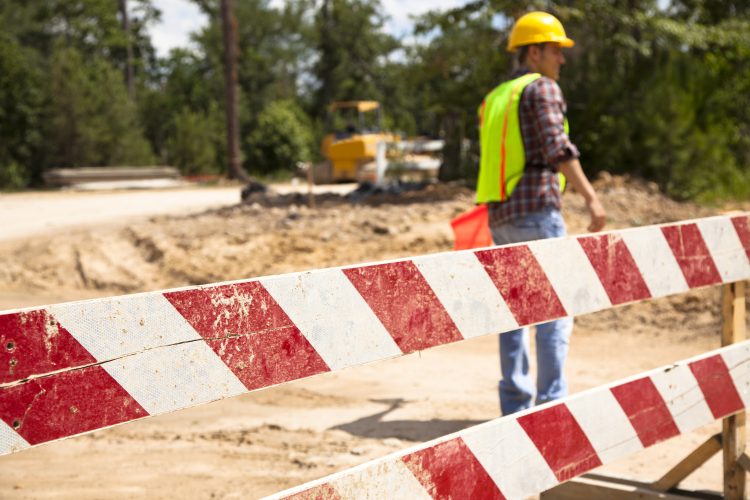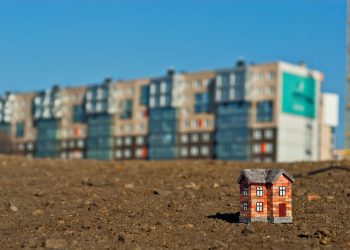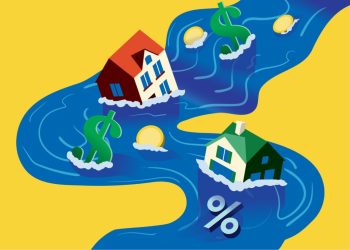After housing starts plunged in May, the latest report shows signs of recovery during June for overall construction—but for the single-family market, specifically, the bad news continues.
The U.S. Census Bureau found that, during June 2025, privately-owned housing starts increased to a seasonally adjusted annual rate of 1,321,000, up 4.6% from the revised May number, though still 0.5% below the June 2024 number. However, single-family housing starts continued to fall, coming in at 883,000—or 4.6% less than in May. Building permits rose 0.2% to 1,397,000 month-over-month, but single-family authorizations fell 3.7% to 899,000.
“The drop off in single-family housing starts reflects the ongoing sluggishness in the for-sale market,” said Lisa Sturtevant, chief economist for Bright MLS, in emailed comments about the report.
Sturtevant cited improved but still low homebuilder confidence in June attributed to “affordability challenges” and political uncertainty surrounding tariffs on building supplies and immigration policy affecting the construction workforce. It remains to be seen how recently announced tariffs on copper, effective August 1, will affect these concerns among builders.
Joel Berner, senior economist at Realtor.com®, also pointed to “(t)he Trump administration’s trade war” as a reason residential construction remains “subdued” in emailed remarks. Builders “are experiencing headwinds from all directions” he wrote, also noting how high (albeit declining) mortgage rates have been dragging down homebuyer demand.
Berner did note, though, that multifamily construction starts had increased 25.8% year-over-year.
“With single-family home sales stalling and existing-home inventory continuing to pick up, builders are reluctant to overcrowd the single-family home market and are instead turning to larger projects with higher margins to insulate themselves from the increased building costs due to tariffs,” said Berner.
Both Berner and Sturtevant ended their comments on a pessimistic note, with the latter citing how “until consumers feel more confident about the state of the economy, new residential construction will remain slow.”
“This month’s new construction data continues a worrying pattern of builders seeming thoroughly discouraged by economic and political conditions,” said Berner. “With a housing supply gap of nearly 4 million homes in this country, builder confidence is essential to providing sufficient inventory to make up the difference and make homeownership a reality for millions of Americans. If construction activity continues to sputter, it may be a very long time before this crisis is addressed.”
Regional breakdown
The Northeast posted the largest monthly improvement in housing starts from May to June, climbing from 105,000 to 182,000 (or 73.3%, a figure that Berner described as “jaw-dropping”). However, reflecting the national trend, single-family starts in the Northeast trended slightly downward from 68,000 to 66,000 (a 2.9% drop).
Year-over-year housing start changes in the Northeast saw a similar discrepancy; overall starts increased by 52.9% from June 2024 to June 2025, but single-family starts were down 5.7%.
Berner also noted a 10.9% increase in single-family completions in the Northeast.
“Single-family homes in the Northeast is the only type-region pair to see year-over-year growth in completions, which is a welcome development, as that region has consistently had the least availability of newly built homes and the highest price premium on them,” he said.
The rest of the four major census areas in the U.S. posted slight monthly declines of housing starts, with the drops in the single-family market generally outpacing the overall drops. The South, which had the highest raw number of starts, saw a 0.7% drop (679,000 to 674,000) and a 5.1% drop (509,000 to 483,000) in the single-family market.
The West saw a 1.4% drop (from 290,000 to 286,000) and a 6.3% drop in the single-family market (from 208,000 to 195,000). Midwest housing starts dropped 5.3% (189,000 to 179,000), but unlike the other regions, the single-family start drop of 1.4% (from 141,000 to 139,000) was lower than the overall construction drop.
Annually, the South posted declines in both single-family starts (9%) and overall starts (18.5%), as did the West (1.7% drop overall, 3% in single-family starts). The Midwest, however, posted annual improvements in both (a 1.7% increase in overall starts, and an 18.8% increase in single-family starts).
For the full housing starts update, click here.












